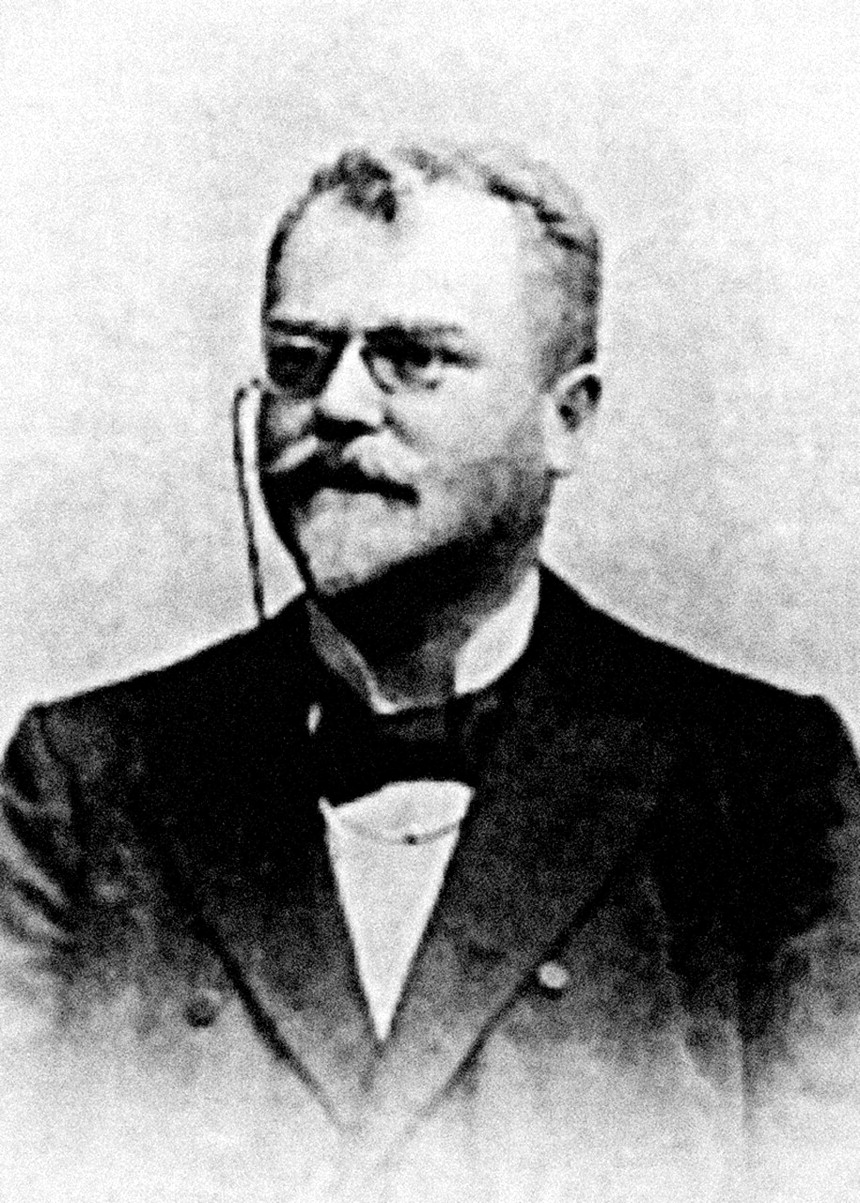Ladislav Haškovec, a Czechoslovakian neuropsychiatrist and professor of neuropathology at the University of Prague, is known among psychiatrists for coining the term “akathisia” (derived from the Greek α−καθιξω, literally, “not to sit”). On November 7, 1901, he reported two cases of akathisia to the Societé de Neurologie in Paris; the case reports were published in the
Revue Neurologique (1). Haškovec also published numerous articles in different languages (Czech, French, German, and Polish) on a broad spectrum of psychiatric and neurological disorders, e.g., the psychiatric symptoms of endocrinological disorders, alcoholism, and meningitis, and the prophylaxis of tuberculosis, as well as on various topics in child and adolescent psychiatry. He was also engaged in issues regarding the public health and forensic psychiatry.
Ladislav Haškovec was born on May 18, 1866, in Bohemia, now part of the Czech Republic. He studied medicine at the University of Prague and completed his doctorate in 1891. Beginning in 1892, Haškovec worked in the department of psychiatry at the university. He completed his habilitation thesis in neuropathology in 1896, becoming an associate professor at the University of Prague in 1906 and a full professor in 1916. From 1906 until 1914, Haškovec was head of the department of nervous diseases at the Hospital of the Brothers of Charity (“Hospitallers”). From 1925 until his retirement in 1936, he was clinical director of the Clinic and Ambulatorium for Nervous Diseases at Karls-University in Prague. Haškovec married and had three children. He died on January 16, 1944, at the age of 77.
In retrospect, Haškovec’s most influential work was regarding akathisia. Today akathisia is usually considered to be a drug-induced syndrome characterized by motor restlessness associated with an irresistible urge to move. In his first report, Haškovec considered akathisia to be related to “hysteria” or “neurasthenia.” However, in Haškovec’s day, there was already considerable debate as to whether akathisia represented a movement disorder, a mental disorder, or both. Haškovec, unhappy with his own primary account of the illness, later emphasized the movement component of his definition
(2), differentiating his syndrome from so-called “kathisophobia,” which he considered a disorder secondary to fear or anxiety. Although akathisia received little attention immediately after Haškovec’s anecdotal description was published, an epidemic of encephalitis lethargica in the 1920s lead to a renaissance of the concept of akathisia when Robert Bing adopted the term to describe a common motor phenomenon in postencephalitic parkinsonism
(3). Although akathisia was readily described with the action of neuroleptic drugs in the 1950s, the importance of akathisia as a potentially severe and devastating side effect was underestimated until the 1970s. With the introduction of atypical neuroleptics, the fortunes of akathisia are again on the wane; however, it remains an underrecognized disorder that can cause considerable suffering mainly in patients taking neuroleptics. The lack of understanding of its pathophysiology continues to pose a challenge 100 years after its original description appeared.


